OAXACANUM Rose, 1911
Synonym : Sedum polyrhizum Praeger (1921) *
Type : Pringle 10243, collected on mossy ledges of Cerro San Felipe, Oaxaca, May 18, 1906 (US 462270).
Subgenus Sedum
Distribution : Mexico, Puebla.
Description (by Rose, in Contr. US Natl. Herb. 13(9): 299. 1911) :
"Stem creeping, rooting at the joints, reddish, somewhat roughened.
Leaves rather closely set but not imbricated, usually standing nearly at right angles to the stem, thick but not terete, rounded on the back, flat on the face, obtuse, with broad base, glabrous, 5 to 6 mm long.
Flowers solitary, terminal, sessile, or sometimes as many as 4 in a small terminal cyme, sepals linear, 3 mm long, distinct nearly to the base, petals yellow,distinct, longer than the sepals, stamens 10, carpels 5, widely spreading, with long styles.
It is not near any of our other known Mexican species, but suggests somewhat S. australe of Guatemala, than which it is a weaker plant with smaller leaves. "
Cytology: 2n = 68.
* The incompletely known S. polyrhizum may belong here or may as well belong to S. australe.
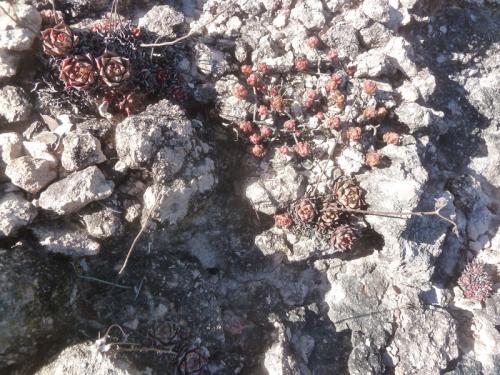
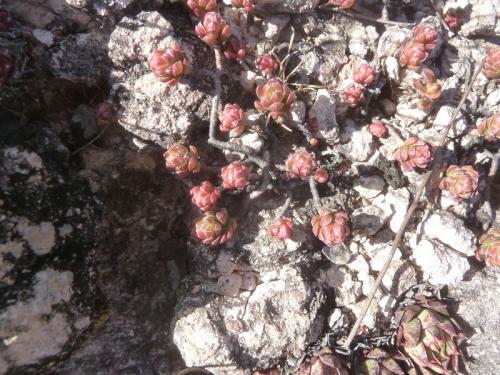
Photos Gerhard Köhres
Sedum oaxacanum fa. polyrhizum in habitat (Chiapas, near border to Guatemala) :
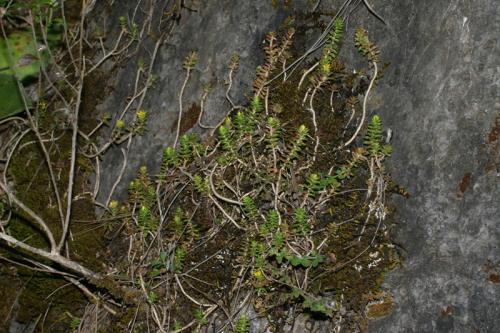
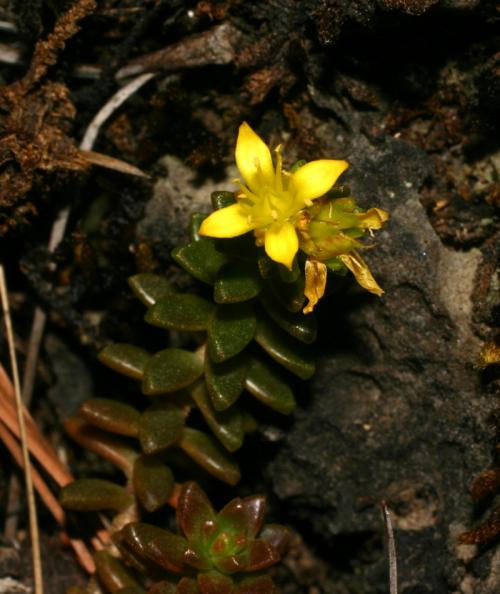
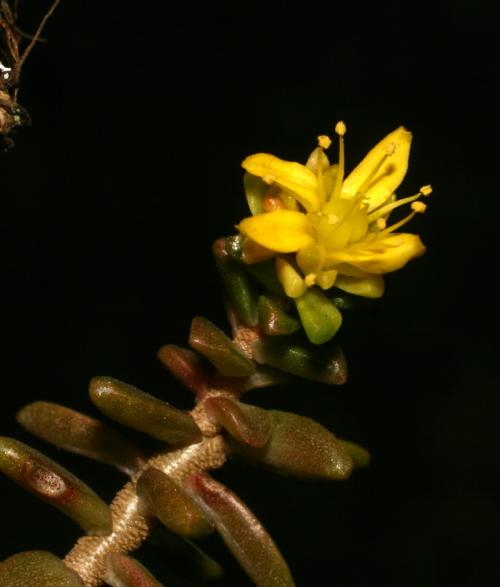
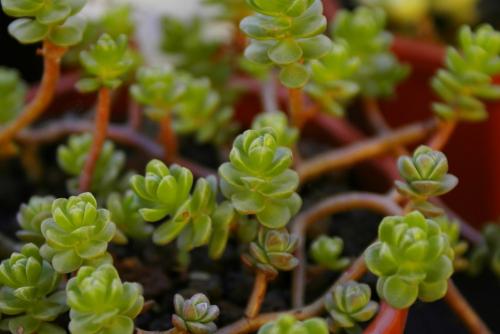
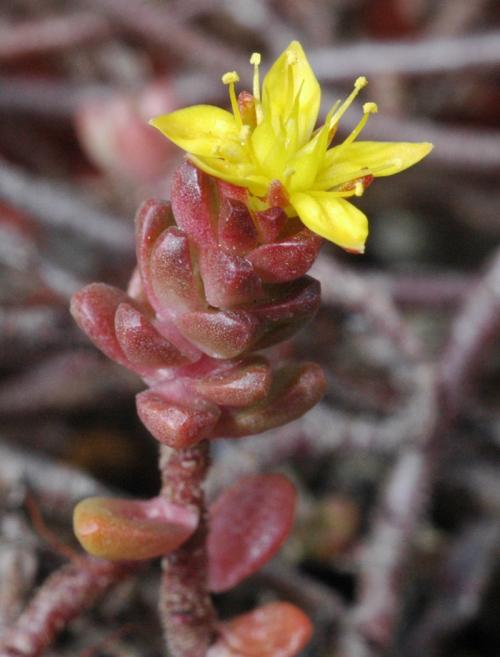
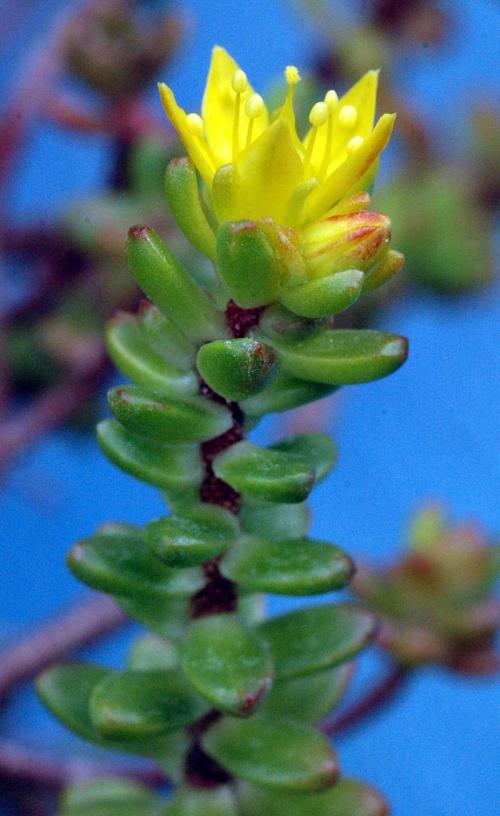
Cultivated in a rockery, in Basque Country, France
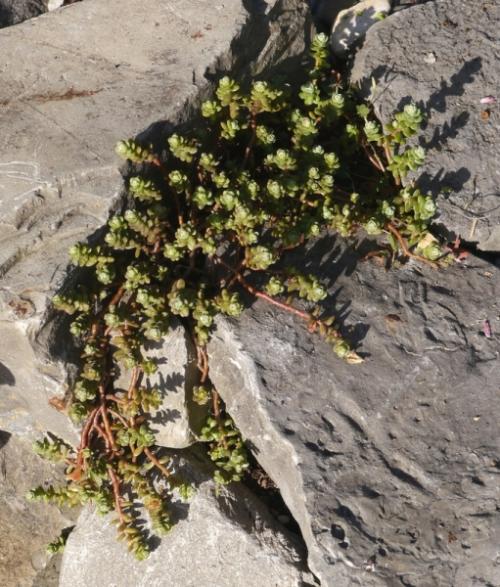
Photo Emmanuelle Aubé